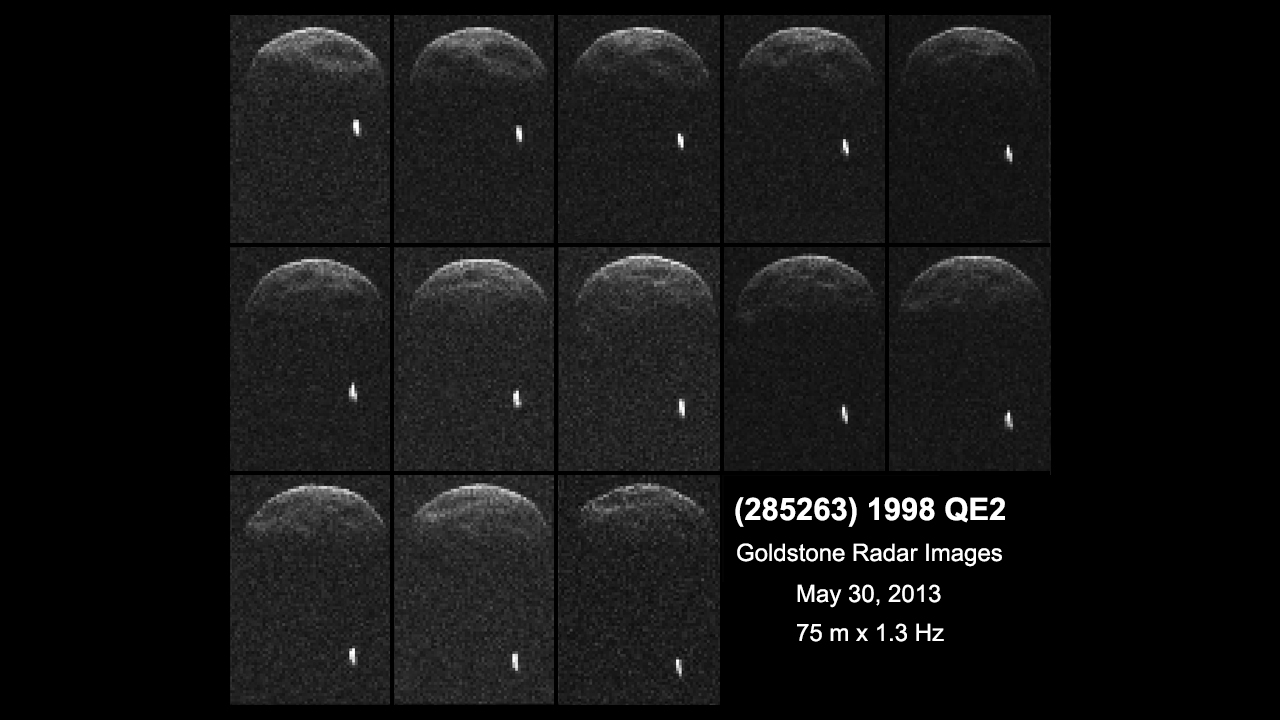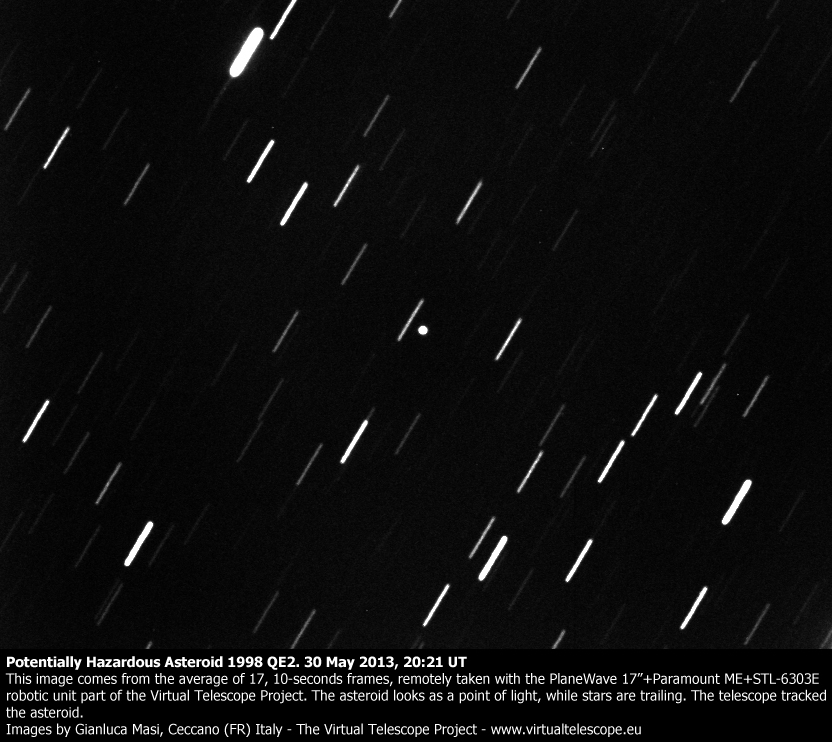
An asteroid wider than nine ocean liners sailed safely past Earth today (May 31), making its closest flyby of our planet for at least the next 200 years.
Asteroid 1998 QE2, which is about 1.7 miles (2.7 kilometers) wide, cruised within 3.6 million miles (5.8 million km) of Earth at 4:59 p.m. EDT (2059 GMT) today, then slipped silently off into the depths of space once again.
The huge space rock never posed any danger of hitting Earth on this pass, scientists say. Indeed, at its closest approach this afternoon, 1998 QE2 was still about 15 times farther away than the moon is from Earth. [Potentially Dangerous Asteroids (Images)]
But astronomers have been tracking the asteroid closely nonetheless, regarding the close encounter as an opportunity to learn more about 1998 QE2's composition, structure and orbit.
They've trained two huge radio telescopes on the space rock — NASA's 230-foot-wide (70 meters) Deep Space Network antenna at Goldstone, Calif., and the 1,000-foot (305 m) dish at Arecibo Observatory in Puerto Rico.
"It is tremendously exciting to see detailed images of this asteroid for the first time," Lance Benner, principal investigator for the Goldstone radar observations at NASA's Jet Propulsion Laboratory in Pasadena, Calif., said in a statement earlier this month.

"With radar, we can transform an object from a point of light into a small world with its own unique set of characteristics," Benner added. "In a real sense, radar imaging of near-Earth asteroids is a fundamental form of exploring a whole class of solar system objects."
Get the Space.com Newsletter
Breaking space news, the latest updates on rocket launches, skywatching events and more!
The observation campaign is set to run through June 9, but it has already transformed scientists' understanding of 1998 QE2. Researchers announced Thursday (May 30), for example, that the asteroid is actually a binary system, in which a 2,000-foot (600 m) moon circles the much larger space rock.
Asteroid 1998 QE2 was discovered in August 1998 by astronomers working with MIT's Lincoln Near Earth Asteroid Research program in New Mexico. The space rock is one of 10,000 or so near-Earth asteroids identified to date, but the total population of these close-flying objects is thought to exceed 1 million.
Scientists are working hard to find and track as many of these asteroids as they can, starting with the biggest and most dangerous ones. The good news is that they've spotted virtually all the mountain-size asteroids like 1998 QE2 that could threaten human civilization if they hit Earth, and none are on a collision course with Earth for the foreseeable future.
Many smaller but still hazardous objects remain undiscovered, however. For example, astronomers have catalogued less than 30 percent of the asteroids at least 330 feet (100 m) wide that are thought to come uncomfortably close to Earth at some point in their orbits. Such objects could destroy an area the size of a state if they slammed into Earth.
Follow Mike Wall on Twitter @michaeldwall and Google+. Follow us @Spacedotcom, Facebook or Google+. Originally published on SPACE.com.
Join our Space Forums to keep talking space on the latest missions, night sky and more! And if you have a news tip, correction or comment, let us know at: community@space.com.

Michael Wall is a Senior Space Writer with Space.com and joined the team in 2010. He primarily covers exoplanets, spaceflight and military space, but has been known to dabble in the space art beat. His book about the search for alien life, "Out There," was published on Nov. 13, 2018. Before becoming a science writer, Michael worked as a herpetologist and wildlife biologist. He has a Ph.D. in evolutionary biology from the University of Sydney, Australia, a bachelor's degree from the University of Arizona, and a graduate certificate in science writing from the University of California, Santa Cruz. To find out what his latest project is, you can follow Michael on Twitter.









